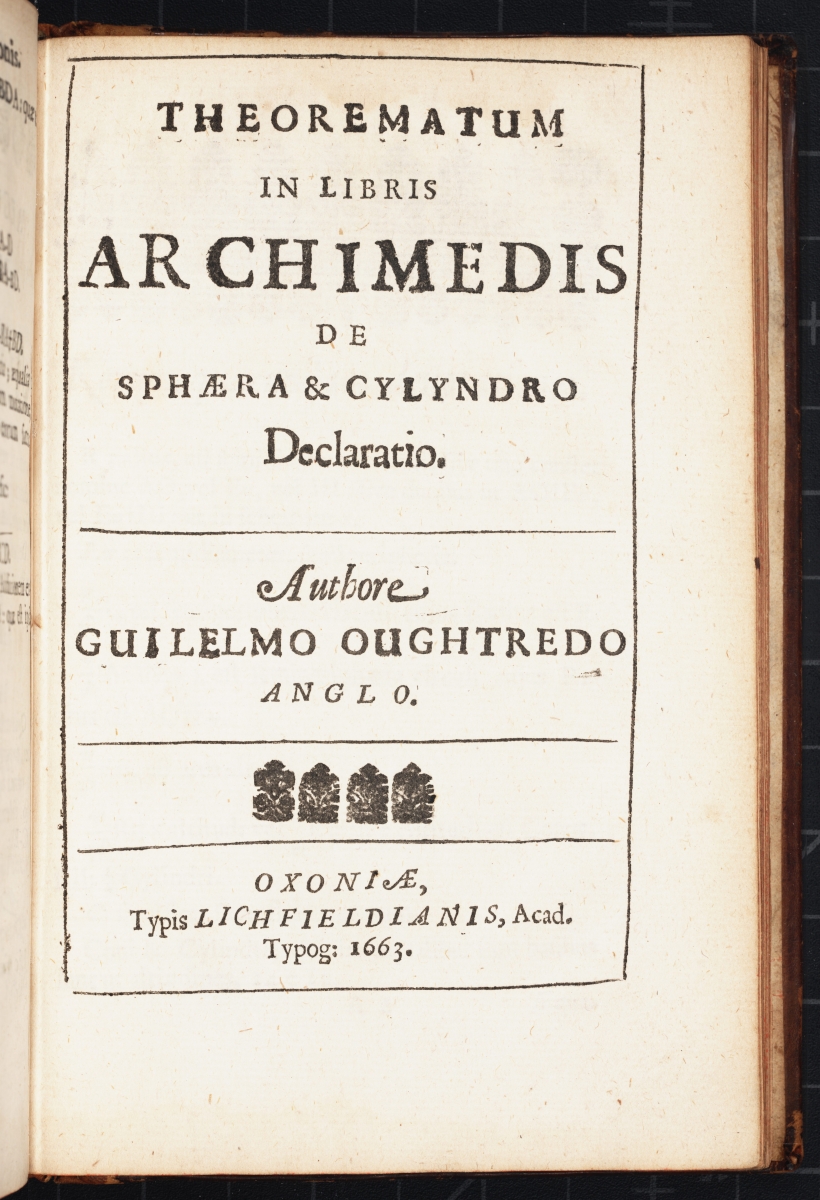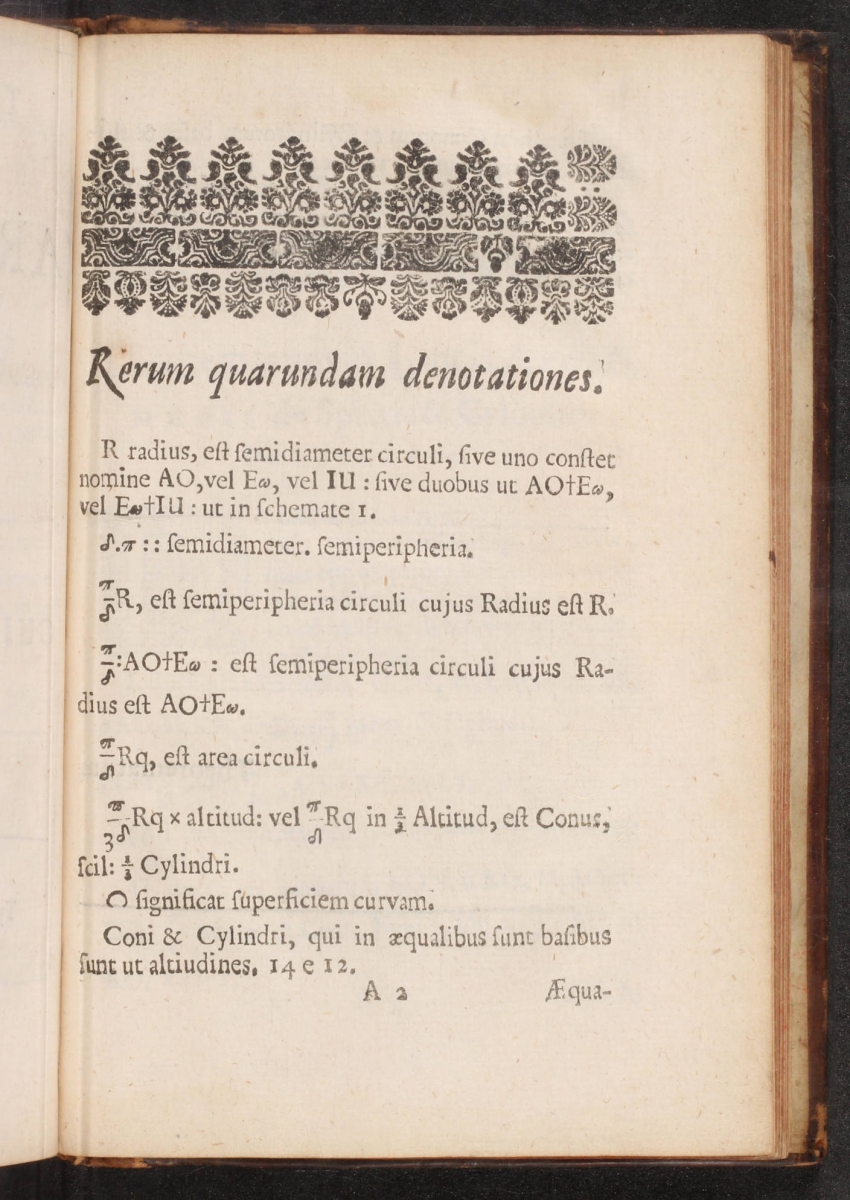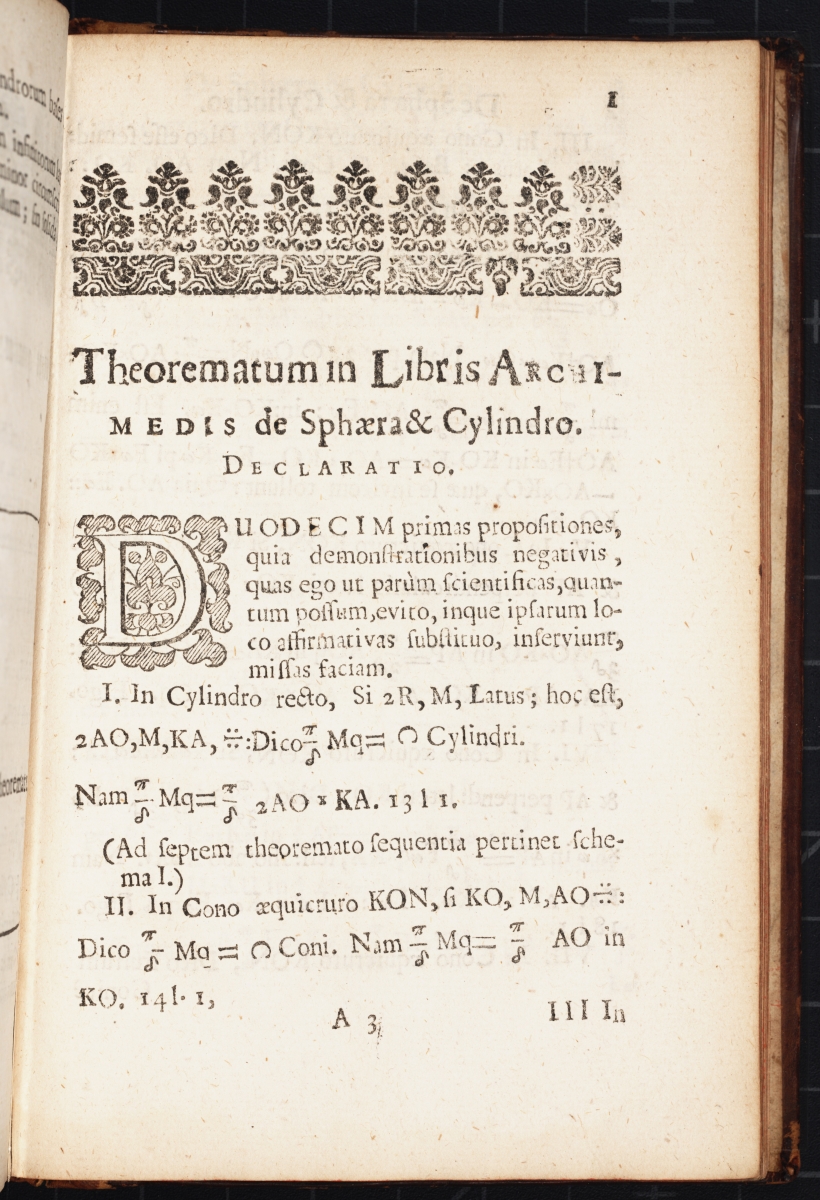- About MAA
- Membership
- MAA Publications
- Periodicals
- Blogs
- MAA Book Series
- MAA Press (an imprint of the AMS)
- MAA Notes
- MAA Reviews
- Mathematical Communication
- Information for Libraries
- Author Resources
- Advertise with MAA
- Meetings
- Competitions
- Programs
- Communities
- MAA Sections
- SIGMAA
- MAA Connect
- Students
- MAA Awards
- Awards Booklets
- Writing Awards
- Teaching Awards
- Service Awards
- Research Awards
- Lecture Awards
- Putnam Competition Individual and Team Winners
- D. E. Shaw Group AMC 8 Awards & Certificates
- Maryam Mirzakhani AMC 10 A Awards & Certificates
- Two Sigma AMC 10 B Awards & Certificates
- Jane Street AMC 12 A Awards & Certificates
- Akamai AMC 12 B Awards & Certificates
- High School Teachers
- News
You are here
Mathematical Treasure: William Oughtred’s Theorematum Archimedis
William Oughtred (1574–1660) was an English clergyman and mathematician. He tutored several well-known people, including John Pell, John Wallis, and Christopher Wren, and his influential work Clavis Mathematicae was used by Isaac Newton. Images of a 1631 Latin edition, a 1667 Latin edition, and a 1647 English translation of Oughtred’s Clavis Mathematicae are available on Convergence.
Oughtred also wrote other works, including a 10-page treatise called Theorematum in Libris Archimedis de Sphaera & Cylindro Declaratio, translated as A Clarification of Theorems in Archimedes’ Books on the Sphere and the Cylinder. Below is the title page, which has the date 1663.

The next image shows the second page, titled “Rerum quarundam denotations” or “Notations of Certain Things,” which lists notation used in the work.

Oughtred was known for his innovative use of symbols. In the first item in the page above, he uses R for the radius or semidiameter of a circle; in later entries a delta-like symbol is used for diameter and \(\pi\) is used for the circumference of a circle. In the second entry, using a dot or period for ratio and a double colon for proportion, he states that the ratio of the diameter to the circumference is in proportion with the ratio of the semidiameter (radius) to the semiperimeter (half the circumference). The fifth entry gives the area of the circle as circumference divided by diameter times the radius squared.

The image above shows the start of the exposition. It contains the first two theorems from Archimedes’ On the Sphere and the Cylinder. Oughtred goes on to state twenty more theorems dealing with cones, spheres and cylinders.
A complete digital scan of Oughtred’s 1663 Theorematum Archimedis (starting on page 221) can be found in the Linda Hall Library Digital Collections. It is bound together with three other works by Oughtred: a 1667 edition of Clavis Mathematicae, call number QA33 .O73 1667; Elementi decimi Euclidis Declaratio [Euclid’s Ten Elements Clarified] (1662); and Horologiorum Sciotericorum in Plano (1663).
Images in this article are courtesy of the Linda Hall Library of Science, Engineering & Technology and used with permission. The Linda Hall Library makes available all existing digital images from its collection that are in the public domain to be used for any purpose under the terms of a Creative Commons License CC by 4.0. The Library’s preferred credit line for all use is: “Courtesy of The Linda Hall Library of Science, Engineering & Technology.”
Cynthia J. Huffman (Pittsburg State University), "Mathematical Treasure: William Oughtred’s Theorematum Archimedis," Convergence (June 2020)




